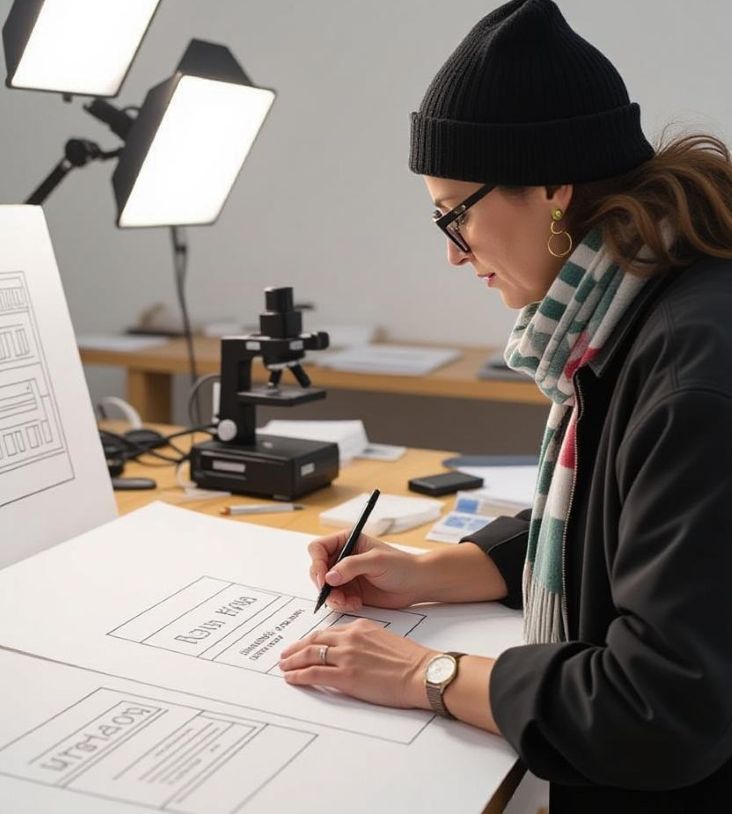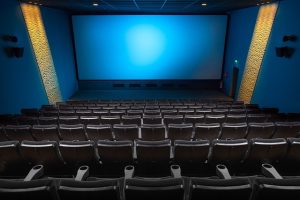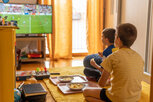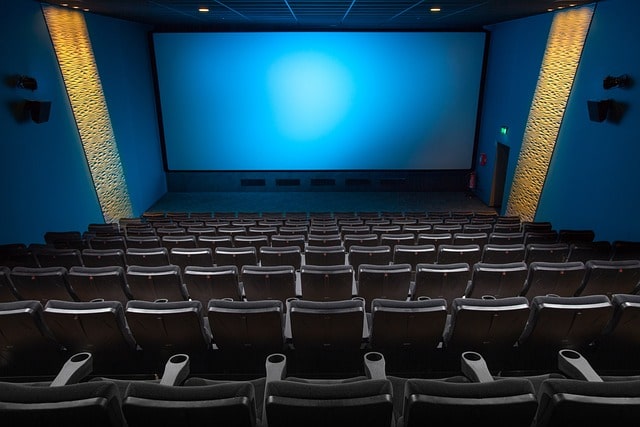Set Design Secrets: Why Movie Houses Need Realistic Nameplates and Props

A single mailbox, a weathered door sign, or a simple nameplate can turn a lifeless film set into a believable home. These small details may seem trivial, but in filmmaking, they carry weight. A well-designed house number or a custom nameplate helps define character, context, and authenticity. Whether it’s a cobblestoned Dutch street or a quiet Parisian suburb, props like these tell stories before a single line of dialogue is spoken.
European cinema, especially Dutch films, excels at this kind of realism. Production designers often source or craft props that feel true to local architecture and culture. For instance, when a director wants a scene to feel lived-in, they might get a nameplate made with a name (naambordje met naam laten maken in AllesMakkelijk) to match the neighborhood’s style. These visual cues connect audiences to the film’s environment, making the story more believable. It’s why a viewer can instantly recognize a film’s setting, not through grand visuals, but through its subtle details.
The Power of Small Details
Props like house number signs or mailboxes are quiet storytellers. They signal geography, class, and time. A rusted metal plaque suggests decades of history. A modern steel nameplate might indicate a minimalist lifestyle.
As production designer Ellen Vos from Amsterdam once said, “A house sign can say more about a character than their dialogue ever could.”
Such attention to realism defines the strength of European filmmaking. In Dutch dramas or French romances, the environment acts as a silent character. Set designers spend hours matching fonts, colors, and materials to local standards. They visit real homes, photograph textures, and even consult craftsmen to ensure every detail, down to a chipped letter, feels authentic.
Authenticity and Audience Connection
Viewers may not consciously notice a house plaque or a name on a mailbox, but they feel its presence. Authentic props create an emotional bridge. When audiences believe the space is real, they invest in the story. A set that feels genuine helps suspend disbelief. Without these details, even a well-acted scene can seem artificial.
In Dutch and European cinema, this philosophy is deeply rooted in tradition. Unlike Hollywood’s often grand productions, European filmmakers prefer intimacy and realism. Their art direction mirrors real life, often using local craftsmen to replicate true-to-life designs. It’s why European film sets feel grounded and human.
Crafting Realism on Set
Designing props that feel real involves research, collaboration, and precision. Set decorators and designers work closely with directors to match the tone and period of the film. Much like contractors who restore or modify office spaces to fit specific visual themes, as explored in this article about the role of contractors in office reinstatement, film set teams apply the same eye for structure, detail, and authenticity to every element of a scene.
Sometimes, props are sourced from real suppliers or customized for authenticity. Designers may order a realistic Dutch-style plaque or get a nameplate made with a name that fits the story’s characters. Even fictional names are designed with purpose, every letter, font, and material choice contributes to storytelling.
The European Standard of Set Design
European production design is built on subtlety and emotional truth. It values the unspoken cues of environment over spectacle. Dutch directors, for instance, often highlight the relationship between people and their surroundings. A street name, a worn brick wall, or a personalized house sign becomes an emotional map for the viewer.
- Films like Character (Karakter) use old-world architecture to emphasize moral tension.
- Modern dramas set in Amsterdam employ minimalist signage to reflect modern identity.
- Even comedies use props like quirky doorbells or colorful tiles to signal personality.
These touches, while small, elevate a film’s realism. They remind viewers that cinema mirrors real life, not just through stories, but through space, texture, and craft.
Conclusion: The Art of Believability
A great film set feels like a place that exists beyond the camera’s frame. Every sign, window, and doormat adds to that illusion. That’s why production designers continue to focus on such tiny yet powerful props. When filmmakers take time to get a nameplate made with a name, they are not just decorating a set. They’re crafting authenticity.
Ultimately, the best movie houses tell silent stories through their walls and signs. Realistic nameplates and props invite viewers inside, making fiction feel familiar. It’s the kind of invisible artistry that turns a set into a world we believe in.

 When the credits roll on a movie set, the process of packing up and returning the space to its original condition begins. This is similar to what happens with office reinstatement. Whether it’s wrapping up a lease or redesigning for a new team, office reinstatement contractor is the unsung heroes of workspace transformation. They ensure everything is restored to its pre-lease condition, creating a clean slate for the next occupant. Let’s explore how their expertise connects with precision, much like the behind-the-scenes crew of a film.
When the credits roll on a movie set, the process of packing up and returning the space to its original condition begins. This is similar to what happens with office reinstatement. Whether it’s wrapping up a lease or redesigning for a new team, office reinstatement contractor is the unsung heroes of workspace transformation. They ensure everything is restored to its pre-lease condition, creating a clean slate for the next occupant. Let’s explore how their expertise connects with precision, much like the behind-the-scenes crew of a film. Argylle, the action-comedy spy film that “The King’s Man” director Matthew Vaughn’s first venture as co-producer and director, made record as the biggest box office major flop of 2024. Vaughn’s co-producer Universal Pictures was responsible for the movie’s distribution,
Argylle, the action-comedy spy film that “The King’s Man” director Matthew Vaughn’s first venture as co-producer and director, made record as the biggest box office major flop of 2024. Vaughn’s co-producer Universal Pictures was responsible for the movie’s distribution,  However, since it became clear that there won’t be any Argylle sequel in the future, Apple’s only hope to recover the $200 million paid to Vaughn is for Argylle to become a popular digital offering. Otherwise, Apple will be forced to simply write off the $200 million as a bad debt.
However, since it became clear that there won’t be any Argylle sequel in the future, Apple’s only hope to recover the $200 million paid to Vaughn is for Argylle to become a popular digital offering. Otherwise, Apple will be forced to simply write off the $200 million as a bad debt.









 Virtual assistant services have been around for several years, and they continue to grow in popularity. One area where virtual assistant services are becoming increasingly useful is in the world of movies. From researching scripts and locations to booking flights and accommodations, virtual assistants can provide a wide range of services to help streamline the movie-making process. In this article, we will explore how virtual assistant services are changing the movie industry.
Virtual assistant services have been around for several years, and they continue to grow in popularity. One area where virtual assistant services are becoming increasingly useful is in the world of movies. From researching scripts and locations to booking flights and accommodations, virtual assistants can provide a wide range of services to help streamline the movie-making process. In this article, we will explore how virtual assistant services are changing the movie industry. Declaring bankruptcy can be a trying experience for individuals and families. The financial impact, loss of assets, and negative social implications can be devastating. Bankruptcy can be daunting but it is an important step forward and a new opportunity to start fresh. To help you find the motivation and inspiration to move forward, we’ve compiled a list of six
Declaring bankruptcy can be a trying experience for individuals and families. The financial impact, loss of assets, and negative social implications can be devastating. Bankruptcy can be daunting but it is an important step forward and a new opportunity to start fresh. To help you find the motivation and inspiration to move forward, we’ve compiled a list of six 

 The first rule of solving math homework is to know the basics. This means that you should at least be able to do long division and know how to convert fractions into decimals. If you can’t do this, then it’s time for a refresher course.
The first rule of solving math homework is to know the basics. This means that you should at least be able to do long division and know how to convert fractions into decimals. If you can’t do this, then it’s time for a refresher course.


 Olivia DeJonge portrays Priscilla Presley, which means the movie’s storyline will show that their relationship was not a whirlwind romance as many had thought. Ms. Presley had given her stamp of approval after seeing a pre-screening of the movie sometime in April. Through a post on Twitter, she commented that the movie tells the
Olivia DeJonge portrays Priscilla Presley, which means the movie’s storyline will show that their relationship was not a whirlwind romance as many had thought. Ms. Presley had given her stamp of approval after seeing a pre-screening of the movie sometime in April. Through a post on Twitter, she commented that the movie tells the 

 In order for websites to be visible and easily found on search engines, Search Engine Optimization is crucial. Also known as SEO, this is the practice and process of marketing any product or service online utilizing search engines. It involves two sets of approaches wherein both have their own techniques that are designed to improve rankings of web pages on search engines. Specific keywords are targeted which allows each web page to rank for keywords typed in by people.
In order for websites to be visible and easily found on search engines, Search Engine Optimization is crucial. Also known as SEO, this is the practice and process of marketing any product or service online utilizing search engines. It involves two sets of approaches wherein both have their own techniques that are designed to improve rankings of web pages on search engines. Specific keywords are targeted which allows each web page to rank for keywords typed in by people. So as to get the most of your SEO efforts, hiring a reliable SEO agency is beneficial. SEO companies delivers accounts they partner with incredible results with their exceedingly strategic approach. Moreover, they make use of wisely constructed amalgamations of particularly effective SEO methods.
So as to get the most of your SEO efforts, hiring a reliable SEO agency is beneficial. SEO companies delivers accounts they partner with incredible results with their exceedingly strategic approach. Moreover, they make use of wisely constructed amalgamations of particularly effective SEO methods.
